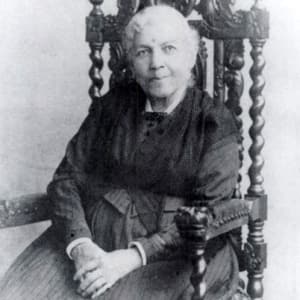
J.B.S. Haldane
British scientist J.B.S. Haldane was recognized for contributions to various fields, from research on genetics and population growth to a cure for tetanus.
Synopsis
British scientist J.B.S. Haldane was born John Burdon Sanderson Haldane in Oxford, England, on November 5, 1892. After studying at the University of Oxford and serving in World War I, Haldane began a prolific and varied career as a geneticist, biochemist, professor and writer. His work in population genetics, which applied mathematical systems to the combined work of Charles Darwin and Gregor Mendel, was particularly influential. Haldane spent his later career in India, where he died in Bhubaneswar on December 1, 1964.
Education and Early Career
John Burdon Sanderson Haldane was born in Oxford, England, on November 5, 1892. His father, John Scott Haldane, was a well-known physiologist who did groundbreaking research on human respiration. As early as the age of 8, a young Haldane was assisting his father with experiments; as a young man, he was his father's scientific collaborator.
Haldane was educated first at Eton College and then at New College, part of the University of Oxford, from which he graduated in 1914 with a degree in mathematics, classics and philosophy. From 1914 to 1919, he served as a military officer in World War I, fighting in France and then in Mespotamia (present-day Iraq).
Scientific Research and Writing
After a brief time as a fellow at New College, from 1922 to 1932, J.B.S. Haldane taught at the University of Cambridge. This position was followed by a year at the University of California, Berkeley. Haldane moved to London in 1933 to teach at the University of London, where he remained until 1957 and became chair of the genetics faculty.
Haldane was known for his wide range of scientific interests and accomplishments. He made valuable contributions to the fields of biology, biochemistry and genetics, occasionally using himself as a subject in his own experiments. He developed a treatment for tetanus and, from 1939 to 1945, conducted research for the British Navy and Air Force, including studies on the effects of mustard gas on the human body.
In one of his most significant projects, Haldane applied Charles Darwin's theory of evolution and Gregor Mendel's study of genetics to his own mathematics-based research on population growth.
Publications and Honors
Haldane's major publications include Daedalus (1924); Enzymes (1930); Animal Biology, co-written with Julian Huxley (1930); and The Causes of Evolution (1932). Haldane also wrote about science for non-academic readers, conveying complex concepts with clarity and humor. Some of his popular essays were published in the anthology Possible Worlds in 1927. In the essay "On Being One's Own Rabbit," he described the experience of running tests on himself in lab experiments. In "On Being the Right Size," published in 1928, he explained the relative advantages and difficulties of size for survival in the natural world: "You can drop a mouse down a thousand-yard mine shaft; and on arriving at the bottom, it gets a slight shock and walks away. A rat would probably be killed, though it can fall safely from the eleventh story of a building; a man is killed, a horse splashes."
Haldane received numerous honors during this phase of his career. In 1932, he was named a fellow of the Royal Society. He was awarded the Legion of Honor by the French government in 1937, and he received honorary degrees from several universities.
Political Beliefs
Haldane's political beliefs were somewhat controversial. During World War I, he became a socialist. In the 1930s, he began reading the work of Vladimir Lenin and became a supporter of Marxism. He wrote for the Communist newspaper The Daily Worker from 1940 through 1950, joining the British Communist Party in 1942. He left the party at the end of the decade, objecting to its official attitudes toward genetics and other sciences, but maintained a Marxist philosophy throughout his life.
Later Life
In 1957, J.B.S. Haldane moved to India. From 1957 to 1961, he served as a research professor at the Indian Statistical Institute in Calcutta, after which he ran a genetics laboratory in Orissa. He became an Indian citizen and converted to Hinduism.
Haldane died in Bhubaneswar, India, on December 1, 1964, at the age of 72, following a year-long battle with rectal cancer. He recorded the experience of that illness, as well as its unsuccessful treatment, in a darkly humorous poem titled "Cancer's a Funny Thing," published after his death.
Haldane was married twice, first to Charlotte Burghes, a writer and journalist, and later (after he and Burghes divorced) to Dr. Helen Spurway, a biologist.




